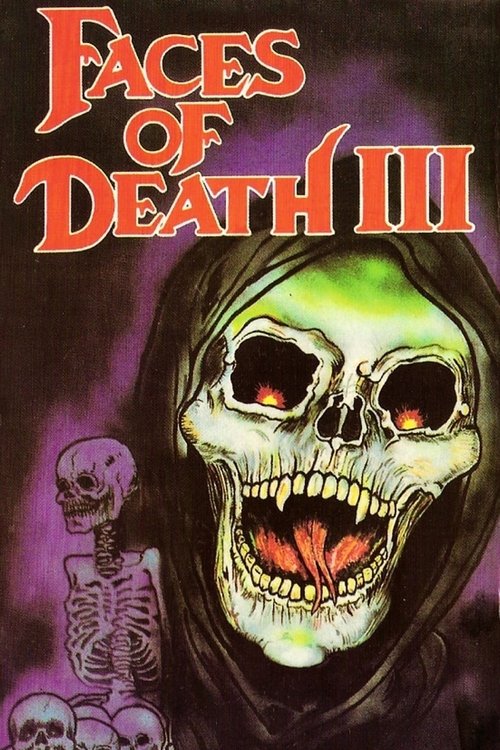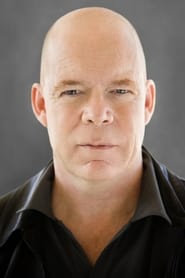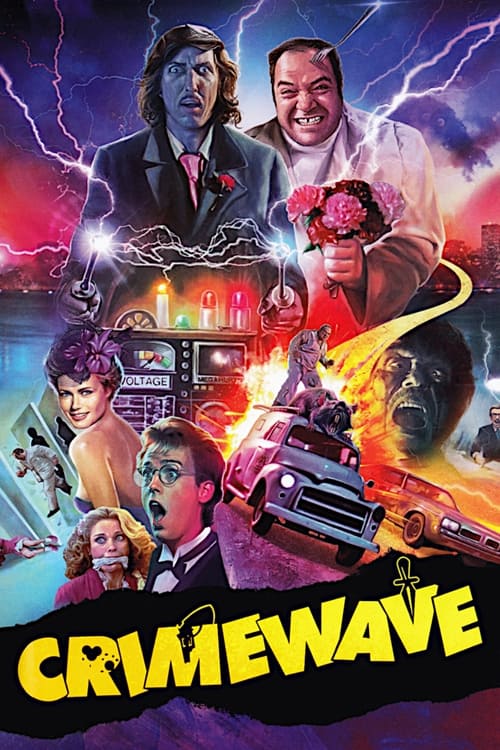
Ask Your Own Question
What is the plot?
The story opens in a dimly lit barn at a carnival sometime in the past, where a young boy named Luther Watts watches wide-eyed as a carnival geek performs a grotesque act: biting the heads off live chickens. The scene is raw and unsettling, the geek's wild eyes and savage grin fixating Luther's attention completely. The barn smells of hay and blood, and the young Luther's face is a mixture of fascination and horror. This moment marks the genesis of his dark obsession. As the geek tears into another chicken, Luther's own teeth begin to ache, and soon after, he loses them. He receives a new set of sharp metallic dentures, gleaming unnaturally in the light, which he soon discovers can be used to bite through flesh. This fusion of fascination and physical transformation cements his descent into psychosis and bloodlust.
Cut to over twenty years later, in the sterile, gray confines of an Illinois prison. Luther Watts, now a gaunt, pallid man with bug-like eyes that seem to bulge unnervingly, is granted parole by the Illinois Board of Corrections. The decision is baffling given his history of multiple murders, but the board, perhaps blinded by bureaucracy or misplaced hope, releases him. Luther's psychosis is evident immediately: he clucks and crows like a rooster, preens, and struts with unnatural jerks and twitches. His communication is reduced to chicken-like noises, and his bug eyes dart wildly as if seeing the world through a primal lens.
Upon release, Luther steps into the bright daylight of his hometown, a small, quiet place that contrasts sharply with his violent nature. His first stop is a local grocery store, where he behaves bizarrely--he steals a pair of sunglasses and, in a chilling display of animalistic behavior, cracks raw eggs over his mouth in the dairy aisle, gulping them down greedily. The store manager watches in horror as Luther's madness unfolds before him. This moment is a vivid visual of Luther's regression into a feral state, emphasizing his detachment from human norms.
Luther's killing spree begins almost immediately. He spots a kindly old lady sitting on a street bench, her face kind but unsuspecting. Without warning, Luther lunges, his metallic dentures closing around her neck. The camera lingers on the grotesque moment as he bites her head off with savage force, the old woman's scream cut short. This brutal act shocks the town and signals the return of a nightmare they thought was behind bars.
As Luther stalks the town, his victims multiply. He attacks various townsfolk with grisly efficiency--ripping throats open, decapitating with his steel teeth, and leaving behind scenes of carnage that are as graphic as they are horrifying. The exact number of victims is unclear, but each kill is more brutal than the last. Despite police efforts, Luther evades capture, moving with a disturbing blend of cunning and animal instinct. His bug eyes scan constantly, and his chicken-like clucking unsettles all who encounter him.
One night, Luther hides in the backseat of a car parked outside the grocery store. The car belongs to Hilary, a widowed woman who lives on a secluded farmhouse outside town. She is unaware of her unwanted passenger as she drives home, the rural road winding through dark fields under a moonlit sky. The isolation of her farmhouse sets a foreboding tone. Hilary's daughter, Beth, a college student, and Beth's boyfriend, Rob, are expected home soon for the holidays. The farm, with its creaking wooden floors and rustic chicken coop, becomes the stage for the story's climax.
Once inside the farmhouse, Luther reveals himself and takes Hilary and Beth hostage. His psychosis deepens as he clucks and struts around the house like a deranged rooster, his bug eyes wild with frenzy. The tension escalates as Hilary and Beth try to reason with him, but Luther's communication is limited to guttural noises and violent gestures. The farmhouse, once a place of safety and warmth, becomes a prison of terror.
The final confrontation unfolds in the chicken coop, a grimly symbolic location. The coop, filled with clucking hens and the smell of feathers and manure, mirrors Luther's own twisted identity. Hilary, determined to protect her daughter and end the nightmare, confronts Luther. As he lunges at her with his metallic teeth bared, she fires her shotgun. The blast echoes through the coop, feathers flying as Luther collapses, his bug eyes finally dimming. His death is brutal and definitive, ending his reign of terror.
Throughout the film, flashbacks and subtle exposition reveal the roots of Luther's madness: a childhood fascination with carnival geeks, the transformative moment of receiving his metallic dentures, and his complete psychological break that reduces him to a creature of instinct and bloodlust. The parole board's decision to release him is portrayed as a catastrophic error, a failure that unleashes a monster back into society.
The film closes with Hilary and Beth standing outside the coop, the dawn breaking over the farm. The nightmare is over, but the scars remain. The camera lingers on the empty coop, a silent testament to the horror that unfolded within. Luther Watts is dead, but the chilling image of his bug eyes and metallic teeth haunts the viewer, a grim reminder of the darkness lurking beneath the surface of humanity.
In this way, Luther the Geek tells a story of obsession, madness, and the catastrophic consequences of underestimating the depths of human psychosis. From the carnival barn to the isolated farm, the narrative builds steadily toward a bloody climax that spares no detail, revealing every death, every twisted moment, and the final, fatal confrontation that ends Luther's killing spree.
What is the ending?
In the ending of "Luther the Geek," Luther, the deranged killer with a fascination for chickens, escapes from captivity and goes on a violent rampage. He confronts the main characters, leading to a bloody showdown. Ultimately, Luther is shot and killed, but not before causing chaos and destruction. The remaining characters are left to deal with the aftermath of his rampage.
Now, let's delve into the ending in a more detailed narrative fashion.
As the film approaches its climax, the tension escalates within the confines of the small farmhouse where the main characters have taken refuge. The atmosphere is thick with dread, as they know that Luther, the escaped convict with a twisted obsession, is on the loose. The characters, including the protagonist, a young woman named Mary, and her friends, are barricaded inside, their faces pale with fear and uncertainty.
Scene by scene, the tension builds. The camera pans to Mary, her eyes wide with terror as she clutches a makeshift weapon, her heart racing. She recalls the horrific tales of Luther's past, his brutal acts of violence, and the chilling way he had once killed a man with a chicken. The sound of rustling outside sends shivers down her spine, and she exchanges worried glances with her friends, who are equally on edge.
Suddenly, the door bursts open, and Luther appears, a wild look in his eyes, his face smeared with dirt and blood. He is a terrifying figure, embodying chaos and madness. The characters scramble to defend themselves, but Luther's strength and unpredictability make him a formidable opponent. He lunges at them, and a struggle ensues, filled with frantic movements and desperate cries.
In the chaos, one of Mary's friends, a brave but impulsive young man named Tom, attempts to confront Luther directly. He charges at him, but Luther, with a swift and brutal motion, overpowers him. The scene is visceral, showcasing the raw violence of the encounter. Tom's fate is sealed as he falls to the ground, lifeless, leaving Mary screaming in horror.
As the confrontation continues, Mary manages to escape to another room, her heart pounding in her chest. She can hear the sounds of struggle and the cries of her friends echoing through the house. The camera captures her internal conflict--she feels a mix of fear, guilt, and a desperate need to survive. She knows she must find a way to stop Luther before he can hurt anyone else.
In a final showdown, Mary gathers her courage and confronts Luther once more. She finds a gun that had been left behind by one of her friends. With trembling hands, she aims it at him, her voice shaking as she demands that he stop. Luther, in a moment of twisted glee, taunts her, reveling in the fear he instills.
The climax reaches its peak as Mary pulls the trigger. The shot rings out, echoing through the farmhouse. Luther stumbles back, a look of shock on his face, before collapsing to the ground. The camera lingers on his lifeless body, a stark contrast to the chaos he had caused.
In the aftermath, Mary stands over Luther's body, tears streaming down her face. The weight of what she has done crashes over her, mingling with relief that the nightmare is finally over. The remaining characters, battered and traumatized, gather around her, their expressions a mix of sorrow and disbelief. They are left to grapple with the loss of their friends and the horror they have just endured.
As the film concludes, the camera pulls away from the farmhouse, now a scene of devastation. The once vibrant setting is now marked by tragedy, a haunting reminder of the violence that unfolded. The final shot lingers on the quiet landscape, leaving the audience with a sense of lingering dread and the stark reality of the characters' fates. Mary and the survivors are left to pick up the pieces, forever changed by the events that transpired, while the legacy of Luther's madness looms over them.
Is there a post-credit scene?
Luther the Geek does not have a post-credit scene. The film concludes without any additional scenes or content after the credits roll. The story wraps up with the final events surrounding the character Luther, leaving the audience with the impact of the film's climax and resolution. The focus remains on the intense and unsettling narrative that unfolds throughout the movie, rather than extending into a post-credit sequence.
What role does the setting play in the development of the story?
The film is set in a small, isolated town, which amplifies the sense of claustrophobia and danger. The locations, such as the rundown carnival and the decrepit house where Luther hides, serve as physical manifestations of his mental state. The eerie atmosphere contributes to the tension, making the audience feel trapped alongside the characters, and heightening the stakes as Luther's violent tendencies escalate.
What motivates Luther to become a violent character throughout the film?
Luther's violent tendencies are rooted in his traumatic past, having been raised in a mental institution where he was subjected to cruel treatment. This background instills in him a deep-seated rage and a desire for revenge against those he perceives as oppressors. His obsession with violence is further fueled by his fascination with the idea of being a 'geek,' a performer who bites the heads off live animals, which he sees as a means of asserting power and control.
How does Luther's relationship with the other characters evolve during the film?
Luther's interactions with other characters are marked by manipulation and intimidation. Initially, he appears charming to some, but as his true nature is revealed, he becomes increasingly threatening. His relationship with the character of the young woman, who becomes a target of his obsession, showcases his duality; he oscillates between moments of vulnerability and terrifying aggression, reflecting his internal conflict and the impact of his past.
What is the significance of the carnival in Luther's life and actions?
The carnival represents both a place of escape and a site of horror for Luther. It is where he feels a sense of belonging among the misfits, yet it also becomes the backdrop for his violent acts. The carnival's chaotic environment mirrors Luther's internal turmoil, and his actions there serve as a culmination of his desire for acceptance and his inability to control his violent impulses.
How does the film portray the theme of isolation through Luther's character?
Luther's isolation is depicted through his interactions and the way he is perceived by others. He is often seen as an outcast, both by society and within the confines of his own mind. This isolation drives him to commit acts of violence as a means of asserting his identity. The film illustrates how his inability to connect with others leads to a spiral of loneliness and aggression, ultimately culminating in tragic consequences.
Is this family friendly?
"Luther the Geek," produced in 1989, is not considered family-friendly. The film contains several potentially objectionable or upsetting scenes and aspects that may be distressing for children or sensitive viewers.
-
Violence: The film features graphic scenes of violence, including brutal attacks and murder, which are depicted in a disturbing manner.
-
Gore: There are moments of explicit gore, with blood and injuries shown in detail, which can be unsettling.
-
Psychological Horror: The character of Luther is a deeply disturbed individual, and his erratic behavior and motivations can create a tense and frightening atmosphere.
-
Themes of Mental Illness: The portrayal of mental illness is central to the plot, and it may be distressing for viewers who are sensitive to such themes.
-
Animal Cruelty: There are scenes that involve harm to animals, which can be particularly upsetting for animal lovers.
-
Dark Themes: The overall tone of the film is dark and unsettling, exploring themes of fear, obsession, and violence.
These elements contribute to the film's mature rating and make it unsuitable for younger audiences or those who are sensitive to such content.

























